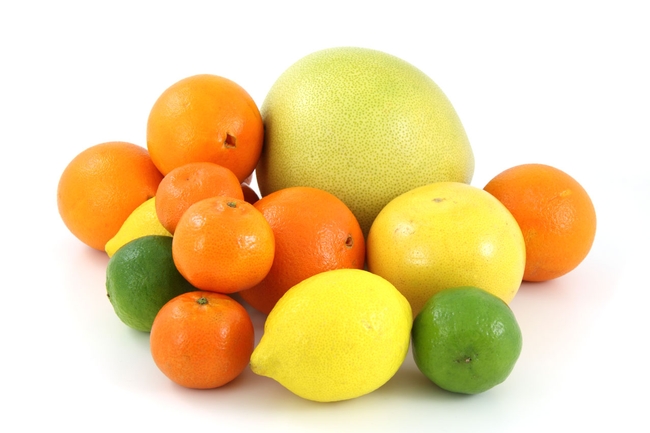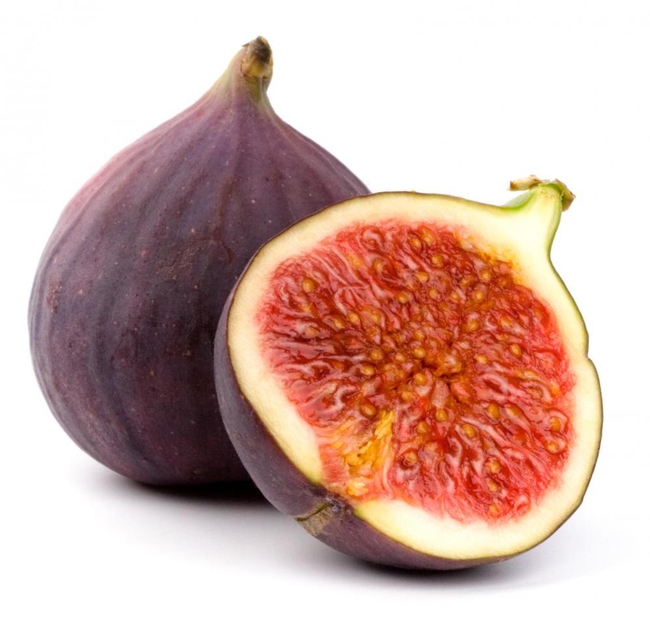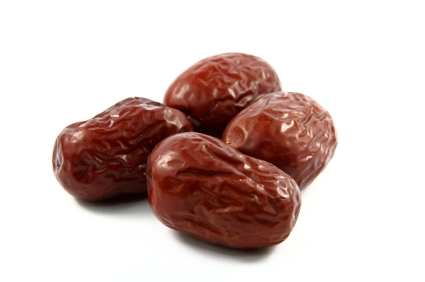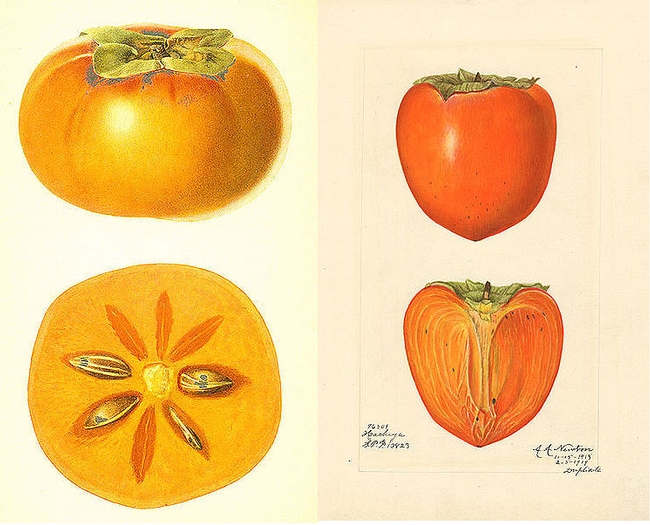Pruning the Backyard Fruit Trees This Winter?
Advice for the Home Gardener from the Contra Costa Master Gardener Help Desk
Client's Questions and Requests
Client called and discussed about his need for more information about pruning his numerous backyard fruit trees. He lives in central county. CCMG Help Desk followed up with an email on advice about pruning his fruit trees.
CCMG Help Desk Response and Advice:
Thank you for calling the Master Gardener help desk this morning. It was nice to speak with you. It was also great to get a new recipe for cooking fava beans!
You have a wide variety of wonderful fruit trees in your yard, many of them not commonly planted in this area. You asked about pruning them. Basically, the idea behind pruning is to control size for easier care in maintaining and picking fruit (taller trees do not bear more fruit!); increase strength – develop strong limb structure; distribute sunlight evenly throughout tree; regulate fruit bearing – removes excess fruitwood; renew fruitwood – to continue strong buds and flowers; and to remove undesirable wood- dead, broken, and crossing branches.
University of California and its Cooperative Extension provides a wealth of information, most of it free through their catalog (http://ucanr.edu/Publications_524/)which you can order from (see also link on CCMG home page (http://ccmg.ucanr.edu/), column left). You can also find extensive UCCE information published on the web. Here is a link to a great publication that describes fruit tree pruning and includes diagrams to help you figure out how to prune your own trees: http://homeorchard.ucdavis.edu/8057.pdf.
You mentioned that some of your trees were getting large-here's a link to an article about pruning overgrown fruit trees: http://homeorchard.ucdavis.edu/8058.pdf. Both of these have enough basic information to cover all your deciduous trees, but for the less-common varieties, I'll give you some hopefully useful hints and tips below, as well as links to more information about each one.
photo: publicdomainpictures.net
Prune citrus in late spring or summer to shape trees, only to remove twiggy growth, dead wood and weak branches, or any crossing, broken or shaded branches from the interior. Wait until May to prune out any frost-damaged wood, as it may revive. Here is a link to Citrus for the Home Garden in Contra Costa County: //ucanr.edu/blogs/slomggarden/blogfiles/4260.pdf. You'll find lots of information specific to growing citrus here. Here is another link that covers diseases and disorders of citrus fruit: http://www.ipm.ucdavis.edu/PMG/C107/m107bpfruitdis.html. You'll see that brown rot is common in citrus—this causes the soft dark decay that develops in citrus and occurs mostly on the bottom side of fruit and happens mostly to fruit lower on the tree (closer to the soil). The dark spots on your Mandarins is possibly from a bacterial infection.
Quince
photo: simplyrecipes.com
Codling moths (common on apples, pears and other fruit) can be a problem for quince. They can be difficult to manage, especially if the population has been allowed to build up over a season or two. It is much easier to keep moth numbers low from the start than to suppress a well-established population. In trees with low levels, codling moth often can be kept to tolerable levels by using a combination of nonchemical management methods; however, it is important to begin implementing these measures early in the season. Sanitation should be the first step in any codling moth control program. Every week or two, beginning about six to eight weeks after bloom, check fruit on trees for signs of damage. Remove and destroy any infested fruit showing the frass-filled holes. It also is important to clean up dropped fruit as soon as possible after they fall, because dropped fruit can have larvae in them. Removing infested fruit from the tree and promptly pick up dropped fruit from the ground is most critical in May and June but should continue throughout the season.
Excellent control can be achieved by enclosing young fruit in bags right on the tree to protect them from the codling moth. This is the only nonchemical control method that is effective enough to be used alone and in higher population situations. However, it is quite time consuming to apply the bags, so this method is most manageable on smaller trees with fewer fruit. You can bag all the fruit on the tree or just as many fruit as you think you will need. Keep in mind that unbagged fruit are likely to serve as a host and increase the pest population, so it would be prudent to employ sanitation to keep the population in check.
Here is a link to information about codling moths from the University of California: http://www.ipm.ucdavis.edu/PMG/PESTNOTES/pn7412.html that goes into detail about controlling these pests.
photo: mixwellness.com
Prune in late winter after danger from winter freezes, but before the tree blooms in spring. To keep the interior of the tree open during the growing season, prune in summer as needed. Light annual pruning of established trees encourages fruit production; pomegranates tend not to require heavy pruning if maintained regularly. Remove dead and damaged wood during late winter and remove sprouts and suckers as they appear. Heavy pruning will reduce the crop.
photo: freepik.com
As I mentioned on the phone, apricots should be pruned during the summer in late August because of a fungus that infects trees during the cool and wet season. Remove shoots from the center of the tree and cut out interfering limbs and dead and diseased wood. Here is a link to information about pruning apricots:
http://www.ipm.ucdavis.edu/PMG/GARDEN/FRUIT/CULTURAL/apripruning.html.
mixwellness.com
Fig trees are productive with or without heavy pruning. It is essential only during the initial years. Since the crop is borne on terminals of previous year's wood, once the tree form is established, avoid heavy winter pruning, which causes loss of the following year's crop. It is better to prune immediately after the main crop is harvested, or with late-ripening cultivars, summer prune half the branches and prune the remainder the following summer. If radical pruning is done, whitewash the entire tree. Here is a link to information from California Rare Fruit Growers (CRFG): http://www.crfg.org/pubs/ff/fig.html.
Mulberry
photo: dreamstime.com
Jujubes
photo: inlandempirecsa.com
lt: fuyul & rt:hachiya
photo: dreamstime.com
Prune persimmon trees to develop a strong framework of main branches while the tree is young. Otherwise the fruit, which is borne at the tips of the branches, may be too heavy and cause breakage. A regular program of removal of some new growth and heading others each year will improve structure and reduce alternate bearing. An open vase system is probably best. Even though the trees grow well on their own, persimmons can be pruned heavily as a hedge, as a screen, or to control size. They even make a nice espalier. Cut young trees back to 1/2 high (or about 3 feet) at the time of planting. Here is information from CRFG: http://www.crfg.org/pubs/ff/persimmon.html and from UC that includes information on pests and diseases of persimmons: http://www.ipm.ucdavis.edu/PMG/GARDEN/PLANTS/persimmon.html.
*****
Since so many of your trees are not typically grown in our area, one of your best resources is the California Rare Fruit Growers. Their website is http://www.crfg.org/, the local chapter is the Golden Gate chapter (http://www.crfg.org/chapters/golden_gate/index.htm). The Golden Gate Chapter of CRFG conducts meetings throughout the northern San Francisco Bay Area, usually in the odd-numbered months on the second Saturday of the month. Meetings almost always include speakers, tastings, a raffle of unusual plants and the chance to talk to people who live in your area and who share your interests. You would probably find someone who could advise you further on pruning techniques at one of their meetings. In addition, CRFG holds a Scion Exchange in January that you might want to attend. In the past when I've attended, they had classes on pruning of the various fruit trees that you have, let alone the opportunity to get scions that you might want to graft onto your trees (scions are usually free… $5 charge for non-members at the door). Information on the CRFG's Scion Exchange can be found at http://www.crfg.org/chapters/golden_gate/scionex.htm. I have always enjoyed the Exchanges when I attended.
I hope this gives you a start on pruning your backyard orchard. Please let us know if you have more questions.
Contra Costa Master Gardeners Help Desk
Note: The Contra Costa Master Gardener Help Desk is available year-round to answer your gardening questions. Except for a few holidays, we're open every week, Monday through Thursday for walk-ins from 9:00 am to Noon at 75 Santa Barbara Road, 2d Floor, Pleasant Hill, CA 94523. We can also be reached via telephone: (925) 646-6586, email: ccmg@ucanr.edu, or on the web at http://ccmg.ucanr.edu/Ask_Us/